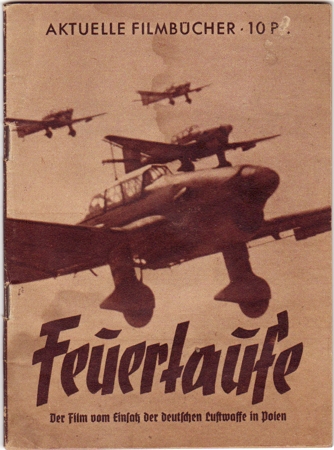Saturday 6 April 1940
 |
| A slow transport bringing German troops to southern Norway. |
Operation Weserubung: The main German invasion force embarks for Norway on 6 April 1940.
- Kriegsmarine Marine Gruppe 1 departs from Cuxhaven for Narvik (10 destroyers carrying 2000 troops, plus battleships Scharnhorst & Gneisenau);
- Kriegsmarine Marine Gruppe 2 departs from Wesermünde for Trondheim (cruiser Admiral Hipper & 4 destroyers carrying 1700 troops).
German warships are being used as fast transports. Admiral Hipper carries 1,700 Mountain Troops to Trondheim.
Troopship Nordmark sails into the Atlantic to wait off the coast of Norway.
During the night, a sea transport squadron leaves from Stettin with 15 steamers. In is taking 3,900 troops, 742 horses, 942 armoured vehicles. It is headed for Oslo.
Battle of the Atlantic: U-1 (Korvettenkapitän Jürgen Deecke) is missing and presumed lost as of this date. The leading theory is that it struck a British mine in Field No. 7. All hands are lost.
U-50 (Kapitänleutnant Max-Hermann Bauer) strikes a mine and sinks in the North Sea north of the Terschelling. All 44 crew perish.
U-59 (Kapitänleutnant Harald Jürst) torpedoes and sinks 2,118 ton Norwegian freighter Navarra 20 miles north of Scotland at 03:16. There are 14 survivors, picked up by Norwegian freighter Atlas, and 12 perish, six when their lifeboat capsizes.
German auxiliary cruiser Orion leaves Germany under the command of Korvettenkapitän (later Fregattenkapitän) Kurt Weyher. She is disguised as a neutral freighter and headed to the Indian Ocean.
British submarines HMS Truant and Seal depart from Rosyth, while HMS Tarpon heads for the Heligoland Bight. All are patrolling for German ships which are thought to be headed for Norway.
British corvette HMS Gladiolus (Lt. Commander Harry M. C. Sanders) is commissioned.
Convoy OA 124 departs from Southend, Convoy OB 124 departs from Liverpool, Convoy OG 25F forms at Gibraltar, Convoy HX 33 departs from Halifax.
European Air Operations: "Operation Nickel," the leaflet campaign against the Reich, concludes. Begun on the first day of the war, Operation Nickel dropped 65 million leaflets and propaganda disguised as "newspapers" since 3 September 1940. The operation has received some public disdain as that "inglorious confetti war."
A French fighter squadron downs two Dornier Do 17 fast bombers over the Western Front.
British Military: The French idea to bomb the Soviet oil fields remains alive at the highest Allied levels. Aerial photos recently taken of the fields arrive in London as the Generals decide whether to proceed with the operation. This is a "panacea" mission: "This will decide the entire course of the war." The tentative plan is to bomb 122 Soviet oil refineries over the course of 45 days.
War Crimes: The executions of Polish officers continues. Polish prisoners are taken to certain locations to be killed. At Kalinin Prison, they kill 390 on the first day, 250 today. The NKVD executioners find that they must pace themselves, the pace of killings is too great.
Holocaust: The persecution of Jews in Poland now extends to those in the provinces of Bohemia and Moravia (former Czechoslovakia). Jews are herded into synagogues as collection points, then put on trucks that will take them to Poland.
German Homefront: "Feuertaufe" ("Baptism of Fire") premieres in Berlin. Hermann Goering attends. The film glorifies the Luftwaffe attacks on Poland. Its theme song is "Bombs Over England," which has the pungent line, "We drive the British lion to the last deciding battle.…"
The government recalls all 1, 2, 5 & 10 pfenning coins, which contain scarce and valuable copper and bronze. The replacement coins are made of plentiful zinc.
British Homefront: The Ministry of Food announces that the new rationing slogan is "The Kitchen Front."
Future History: Pedro Armendáriz Bohr, better known by his stage name Pedro Armendáriz, Jr., is born in Mexico City, Mexico. He becomes famous as an actor in Mexico in the 1960s, and gains international fame in the 1989 James Bond film "Licence to Kill."
April 1940
April 1, 1940: Weserubung is a GoApril 2, 1940: British Subs On Alert
April 3, 1940: Churchill Consolidates Power
April 4, 1940: Missed the Bus
April 5, 1940: Mig-1 First Flight
April 6, 1940: Troops Sailing to Norway
April 7, 1940: Fleets At Sea
April 8, 1940: HMS Glowworm and Admiral Hipper
April 9, 1940: Invasion of Norway
April 10, 1940: First Battle of Narvik
April 11, 1940: Britain Takes the Faroes
April 12, 1940: Germans Consolidate in Norway
April 13, 1940: 2d Battle of Narvik
April 14, 1940: Battle of Dombås
April 15, 1940: British in Norway
April 16, 1940: Germans Cut Norway in Half
April 17, 1940: Trondheim the Target
April 18, 1940: Norway Declares War
April 19, 1940: Dombås Battle Ends
April 20, 1940: Germans Advancing in Norway
April 21, 1940: First US Military Casualty
April 22, 1940: First British Military Contact with Germans
April 23, 1940: British Retreating in Norway
April 24, 1940: British Bombard Narvik
April 25, 1940: Norwegian Air Battles
April 26, 1940: Norwegian Gold
April 27, 1940: Allies to Evacuate Norway
April 28, 1940: Prepared Piano
April 29, 1940: British at Bodo
April 30, 1940: Clacton-on-Sea Heinkel
2016

No comments:
Post a Comment